Theodor Holmskjold’s Danish Fungi
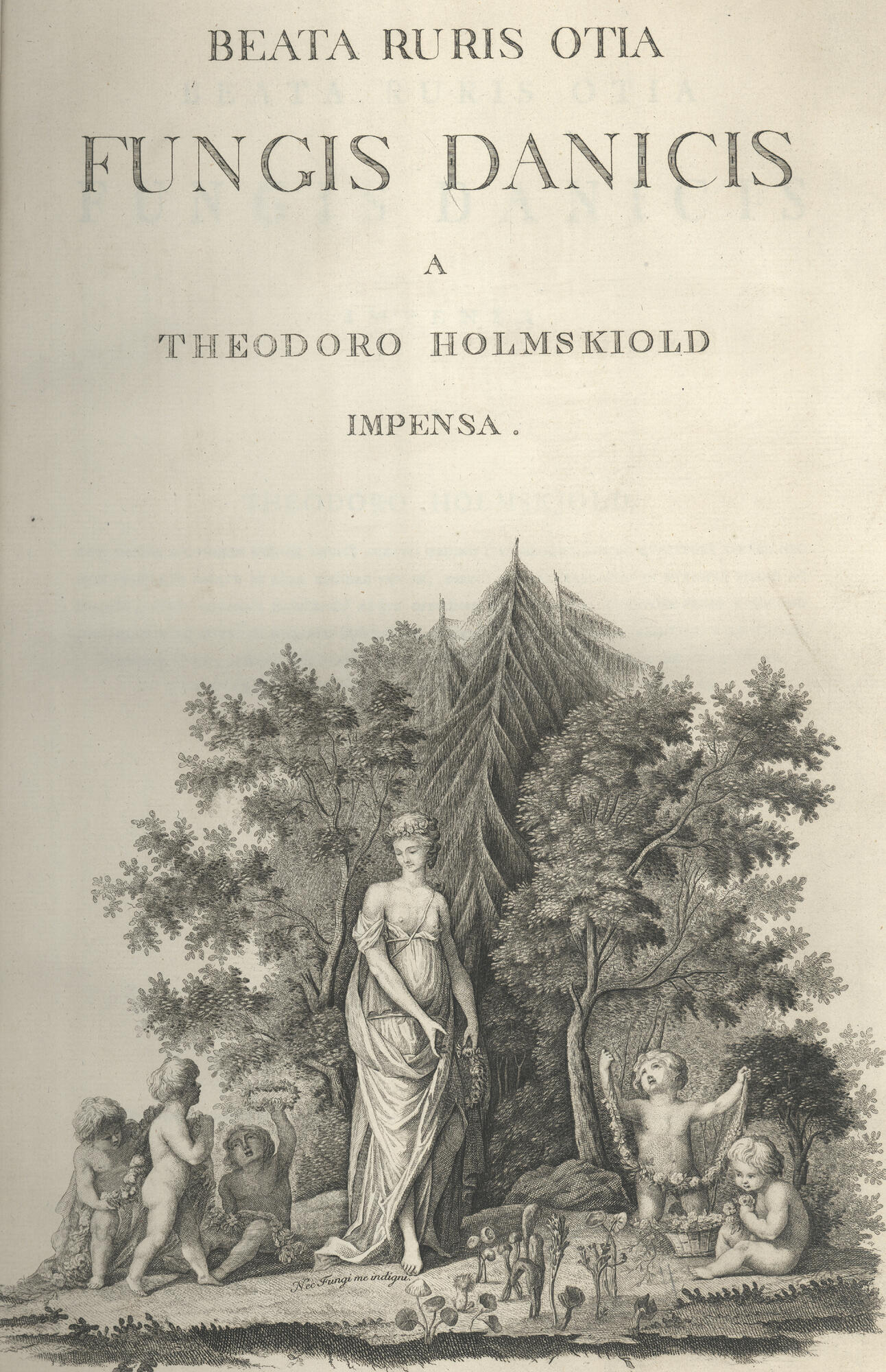

Timeline
1760
Theodor Holmskjold graduated from the University of Copenhagen with a medical degree.
1762-1765
Holmskjold was appointed professor of natural history at the Academy of Soro.
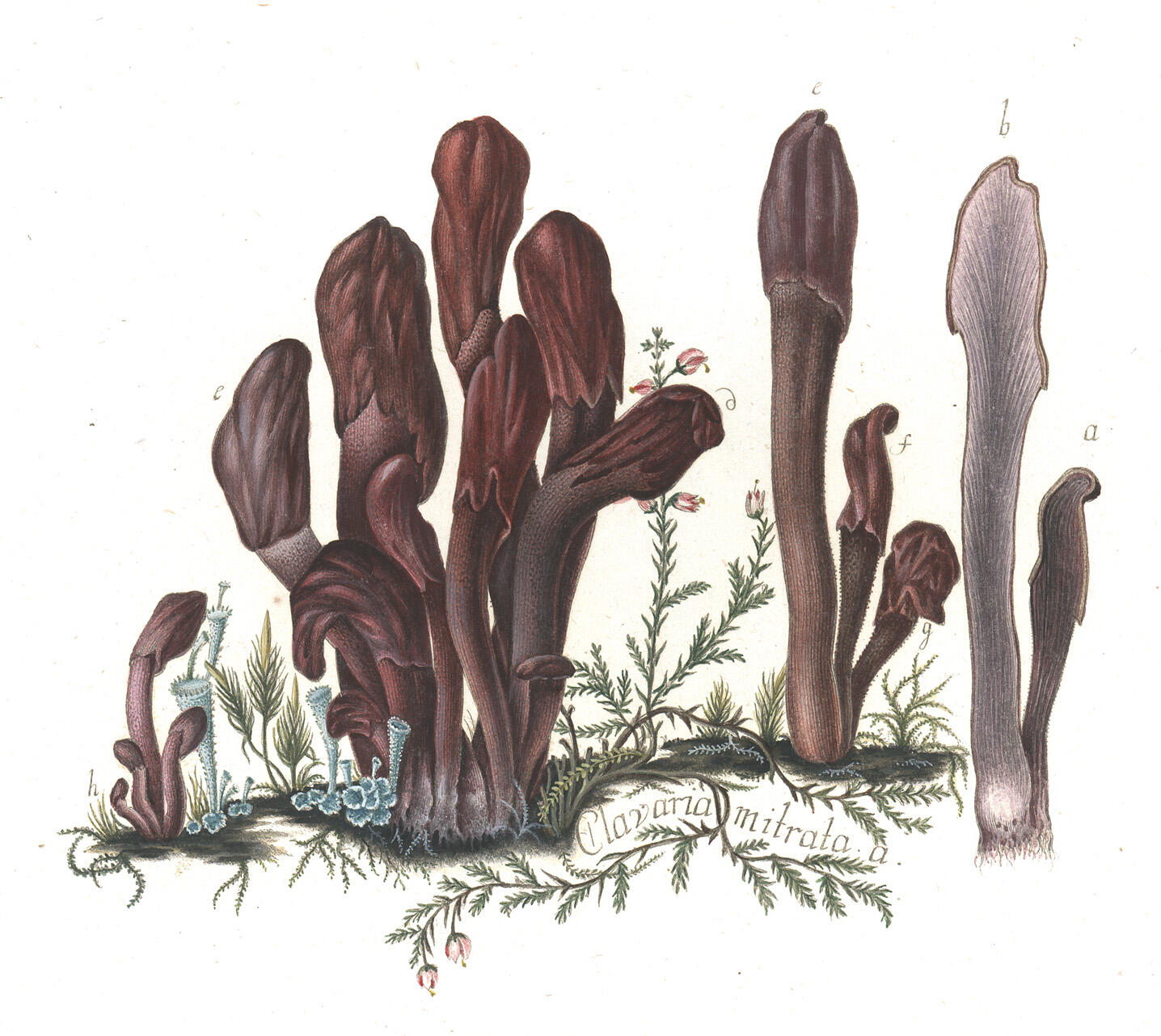
1765-1767
Holmskjold lived in the countryside near the Danish seaport of Aarhus, indulging his interest in botany by observing and writing about the fungi of the area. He commissioned artist Johan Neander to make detailed life-size drawings of the specimens he collected.
1767
Holmskjold was appointed one of the general directors of the Danish postal service. He spent the rest of his life serving the Danish queen and king in several capacities.
1770
Holmskjold completed an early version of Beata. This early draft focused mainly on Agaricaceae, Clavariaceae, and Discomycetes. He was dissatisfied with the book and chose not to publish it.
1790
The first volume was published, with a limited printing of 43 copies distributed to friends and acquaintances. The book contained 32 copper plate engravings of Basidiomycota, or coral fungi, painstakingly hand-colored by both Neander and Johann Bayer.
The descriptive text accompanying these images was in Danish and Latin and includes many important observations. There is considerable variation among the copies of volume one. They copies vary in arrangement, sections, coloring, title pages, and salutations to the Danish king.
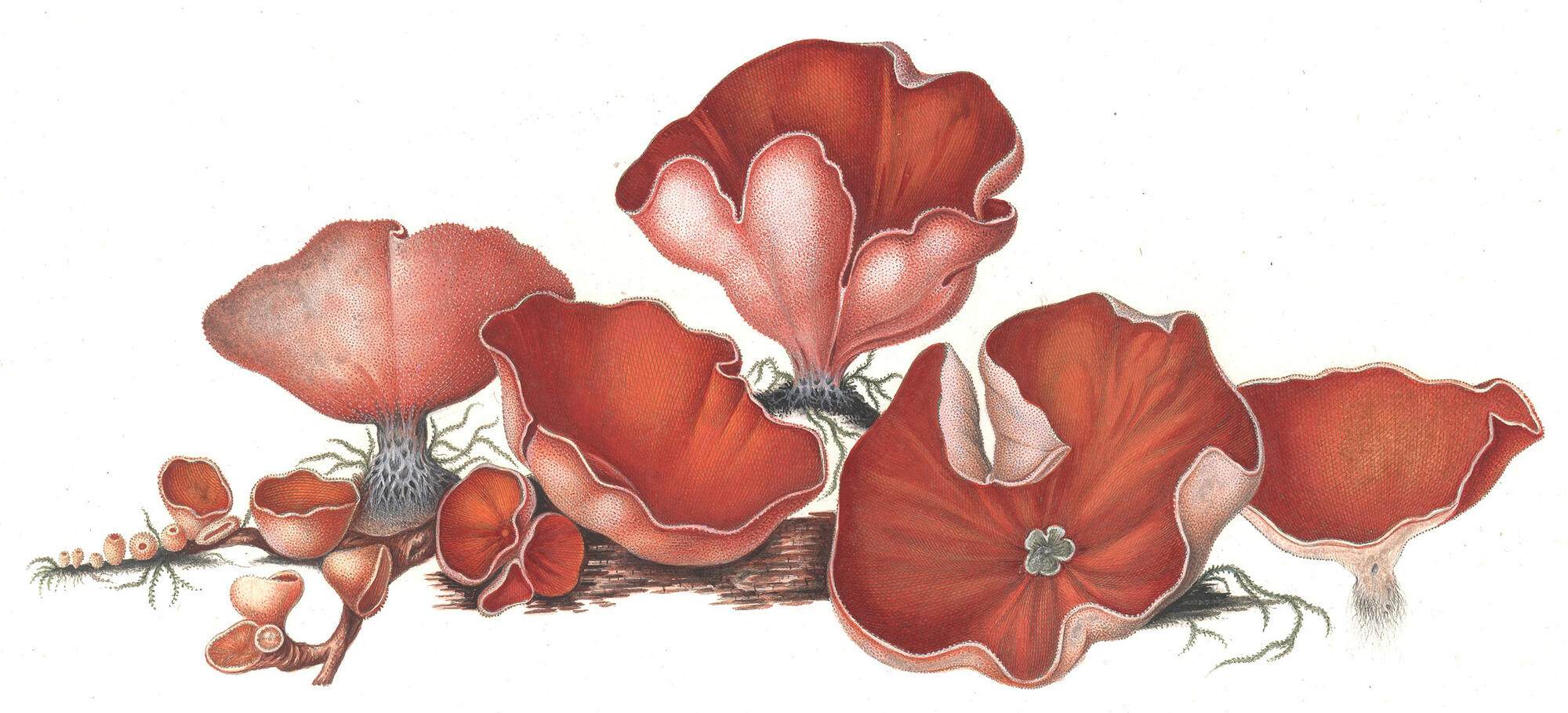
1793
Holmskjold died. The Danish king purchased all the materials for Beata, including the plates and descriptions which were omitted from the 1790 edition. The Crown agreed to subsidize the publication of a second volume and a reprint of the first.
1799
The two book set was published with an additional plate in volume one. The second volume contained 42 colored plates, covering a broader range of fungus genera than the first volume. Because the second volume was published in the author's absence, the plates in the second volume lack the specimen names and no descriptions of the species are given.
Details
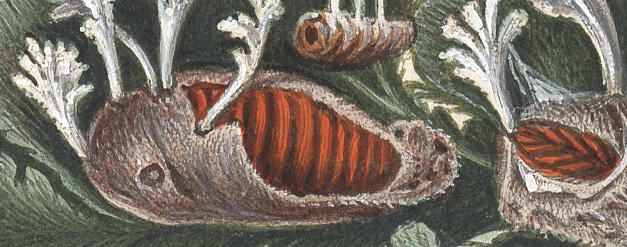
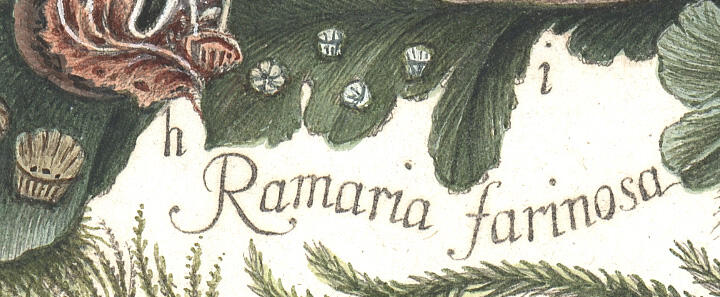
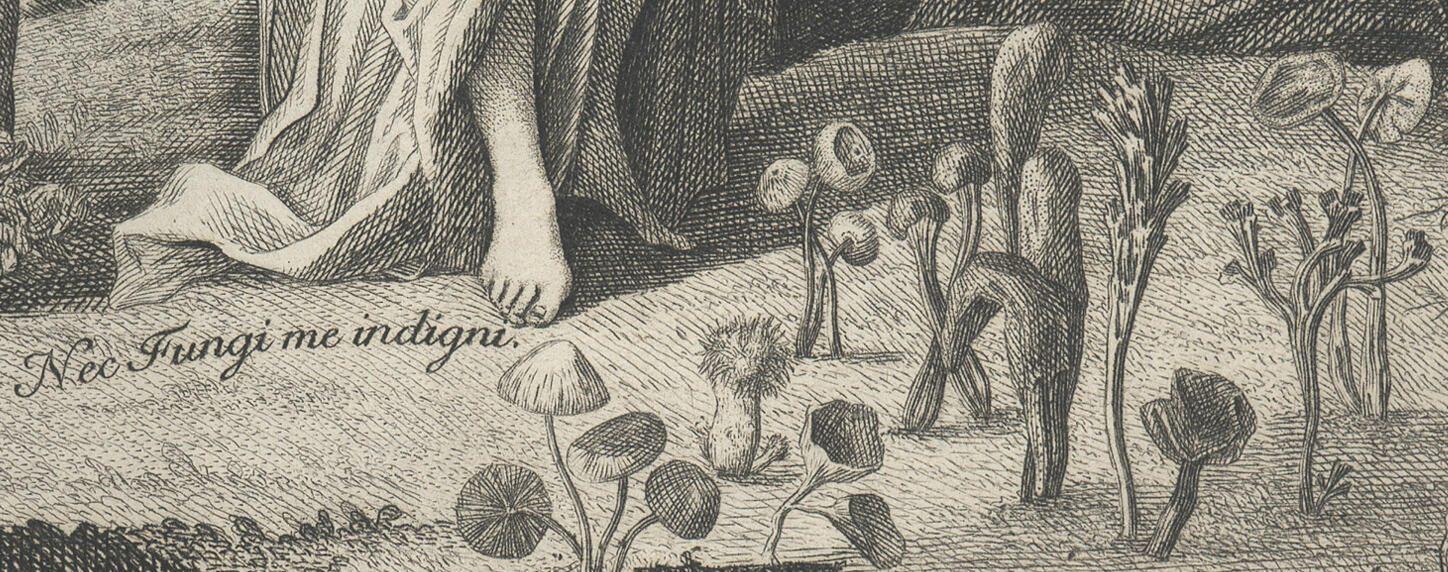
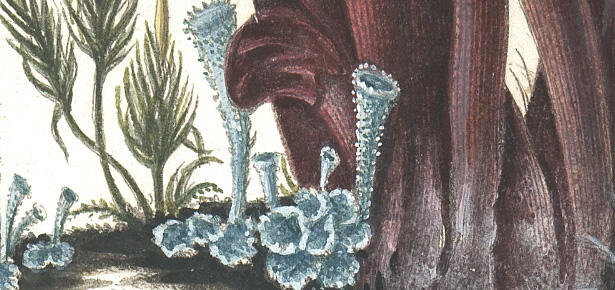
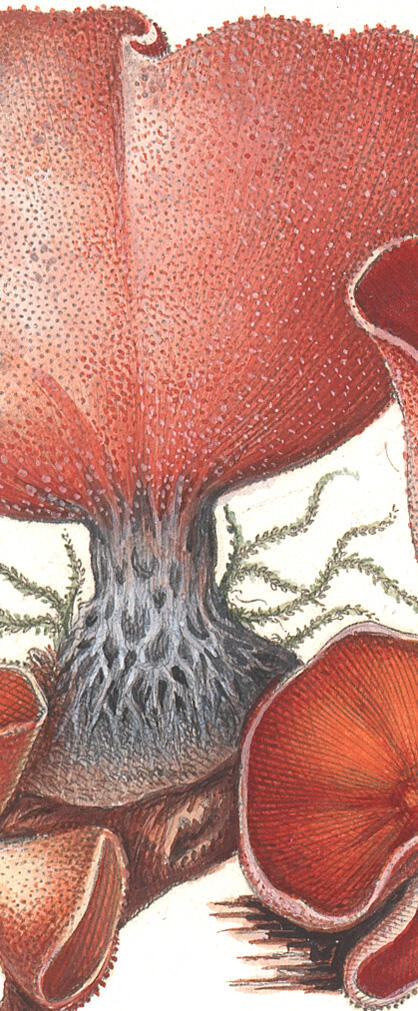
References
Biografisk Leksikon. Vol. 6. Harald-Hoedt. Gyldendal, Copenhagen.
Durand, E.J. 1907. The mycological writings of Theodore Holmskjold and their relation to Persoon's Comentario. J. Mycol. 13: 141-142.
Hayden, A. 1911. Royal Copenhagen Porcelain: Its History and Development from the Eighteenth Century to the Present Day. T.F. Unwin, London.
Lind, J.V.A. 1913. Danish Fungi as Represented in the Herbarium of E. Rostrup. Gyldendalske
boghandel, Copenhagen.
Pfister, D.H. and Boise, J.R. 1987. A bibliographic and nomenclatural account of Theodor Holmskjold's publications on fungi. Nova Hedwigia. 45: 487-500.